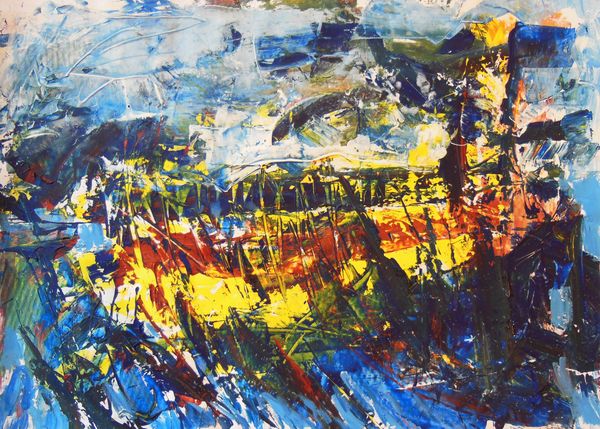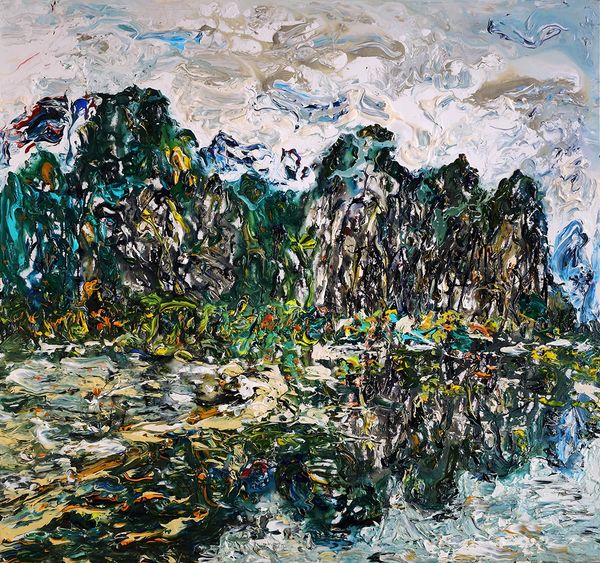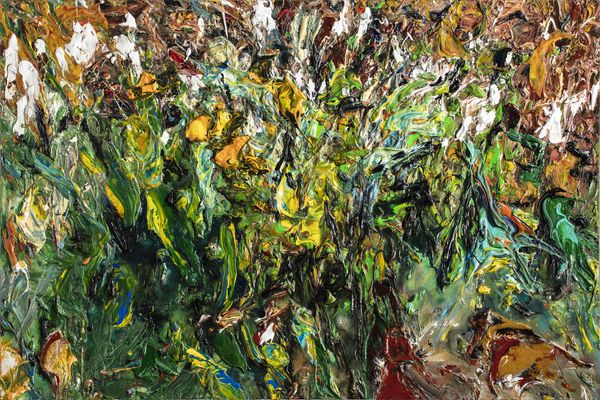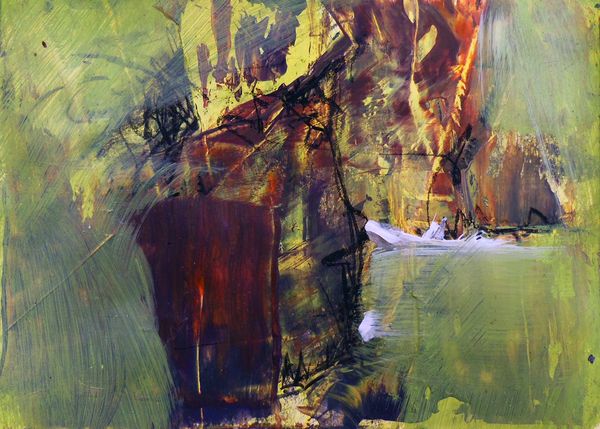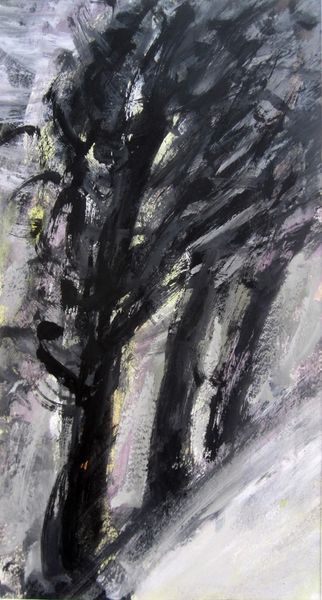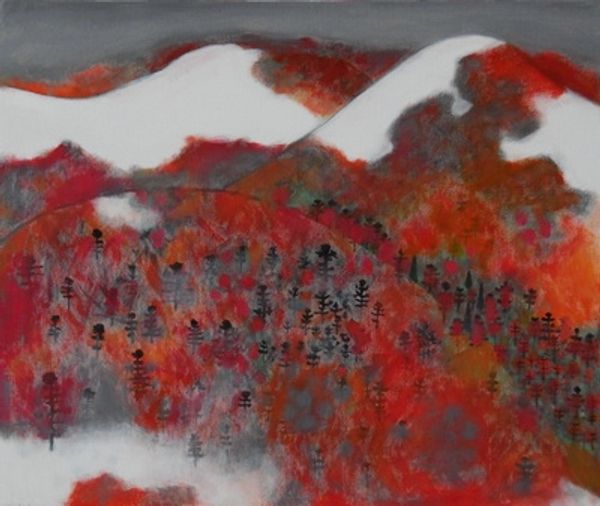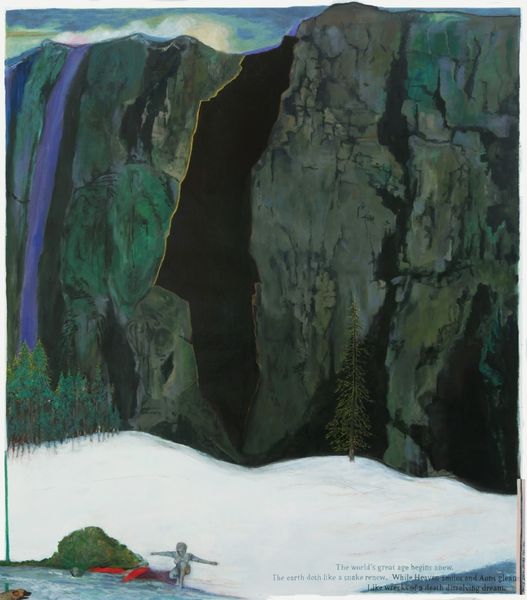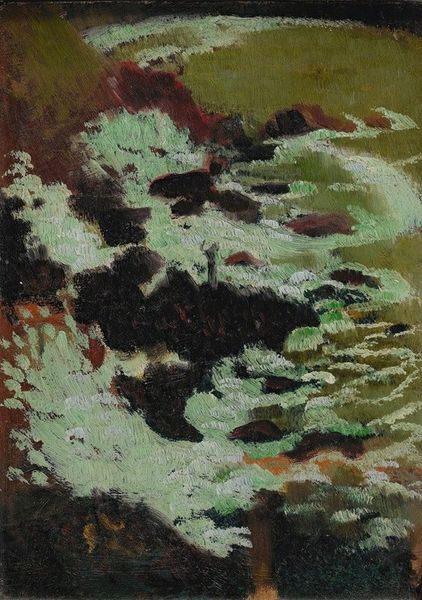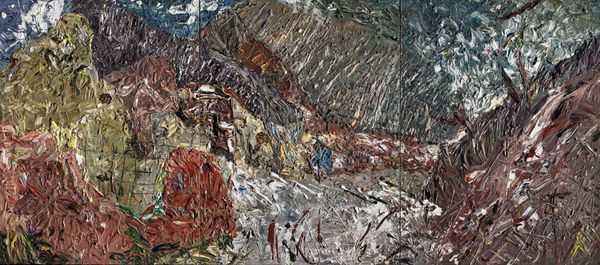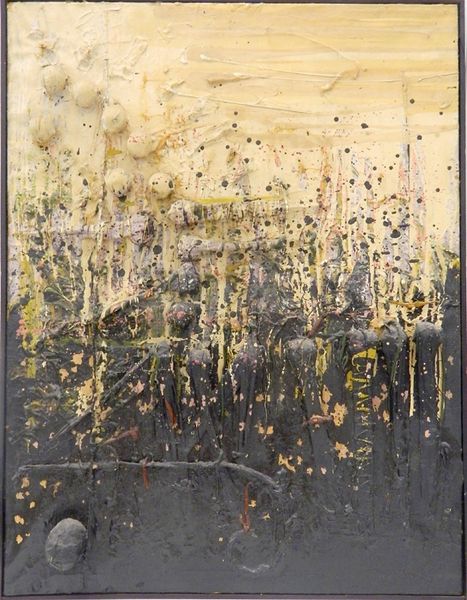
plein-air, oil-paint, acrylic-paint, impasto
#
abstract expressionism
#
plein-air
#
oil-paint
#
landscape
#
impressionist landscape
#
acrylic-paint
#
impasto
#
acrylic on canvas
#
expressionism
#
expressionist
Copyright: ARTERA: FROM ARTIST
Curator: Looking at this piece titled “After the Rain” by Lu Bonlin, the immediate impression is of an extremely wet landscape, saturated with recent rainfall, almost vibrating with life. The use of impasto creates a very tactile surface. Editor: I'd agree, that texture practically screams immediacy and emotion. Bonlin’s capture feels reminiscent of post-war anxieties where rapid urbanization changed the role of nature as something more vulnerable, something to protect from environmental harm. Curator: That’s an insightful interpretation. Knowing the artist’s landscape roots, his style draws heavily from expressionism where landscapes offer glimpses into his deeper feeling towards the environment that he's trying to connect with. The stark contrast of the vibrant green with the muted grays speaks to that struggle. Editor: There’s a tension at play, for sure. Note how the impressionist approach to painting light actually emphasizes the feeling of gloom, making you contemplate our society’s complex connection to industrial progress. There’s this unsettling calm looming in this artwork. Curator: I find that duality interesting. You read that gloom as unsettling, and I almost see resilience. Rain washes away, it cleanses. The boldness of the greens dominating the composition indicates growth and revival. Bonlin, in capturing the after-effects, reminds us that landscapes aren’t static, they’re forever changed and in the process of changing. The politics of imagery comes through here: the environmental message that we need to connect to the landscape. Editor: Absolutely, and I can see the historical and social value that Bonlin's plein-air painting style presents. This isn't just an aesthetic interpretation. This image engages in our modern dialogue about preserving our resources. The fact that this piece may come from anywhere after post-industrial development makes it powerful. Curator: Exactly, it bridges art history with present-day theory on climate and the natural world. It lets us consider not just what art is, but what art can *do*. Editor: A compelling conversation, it offers a poignant reflection on growth, industry, and our place within the landscapes. Curator: Indeed, let's move along, now, to consider how Bonlin may connect to these similar pieces….
Comments
No comments
Be the first to comment and join the conversation on the ultimate creative platform.
